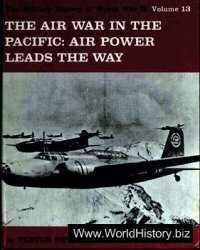Although uranium is one of the most common elements in the earth’s crust, large deposits of high-grade ore are relatively rare. During World War II, the United States and Britain set up an organization, the Combined Development Trust, to gain control ofthe world’s supply ofhigh-grade uranium. By the end of the war, it controlled an estimated 97 percent of world uranium production and 65 percent of the world supply of thorium.755 US forces also seized the bulk of existing German supplies of uranium and bombed facilities in Germany that processed uranium for the German atomic project. US policymakers believed that Western control of uranium would delay Soviet development of atomic weapons and limit the number of atomic weapons the Soviets could produce if they successfully tested a bomb.
Control of world supplies of uranium and thorium was also a key element in the US plan for the international control of atomic energy presented to the United Nations in June 1946 by Bernard Baruch. The Baruch Plan allowed the United States to retain its atomic arsenal until an international control system was fully functioning to US satisfaction, and called for sanctions for violations and for the permanent members of the Security Council to give up their veto on matters related to atomic energy. These provisions would preserve the US atomic monopoly while preventing other nations from developing atomic weapons. Aware of the Baruch Plan’s implications, the Soviets blocked its adoption by the United Nations Security Council in December 1946.
Western control of uranium forced the Soviets to intensify efforts to find and develop uranium within the Soviet Union and the Soviet sphere of influence in Eastern Europe. Mines in Czechoslovakia had been an important source of uranium before World War II and, in March 1945, the Soviets signed a secret agreement with Czech president Edvard Benes that provided for Soviet control of existing stocks of uranium in Czechoslovakia and future Czech production. The Soviets also found rich deposits of uranium in southwest Saxony in the Soviet occupation zone in Germany.
Uranium from East Germany became a key source for the Soviet atomic project, supplying around 45% of Soviet demand by 1950, compared to 33% from within the Soviet Union and 15% from Czechoslovakia.756 Although East German uranium helped fuel the Soviet atomic program, the methods used to extract the ore - forced labor and terrible conditions in the mines - undermined Soviet political goals in their occupation zone. Pay and working conditions improved by the early 1950s, but work-related disease and environmental degradation continued to plague the region.
The uranium that fueled the bomb that destroyed Hiroshima came from Belgian Congo, and Congo remained the main source of uranium for the United States until the early 1950s.757 Congolese ore, from Katanga province, was rich in uranium and cheap due to the low wages paid to native miners. Concerned that Congolese supplies would soon run out, the United States signed a supply agreement in 1950 with the Union of South Africa, which possessed around 60 percent of the world’s significant deposits of lower-grade uranium ore. To cement its relationship with South Africa, the United States extended economic and military assistance to the apartheid regime.
The strategic importance of access to uranium lessened in the mid-1950s due to increased production in the Soviet Union, the United States, and Canada, the development of improved means to utilize low-grade ore, and the shift to thermonuclear weapons, which required less uranium.




 World History
World History









